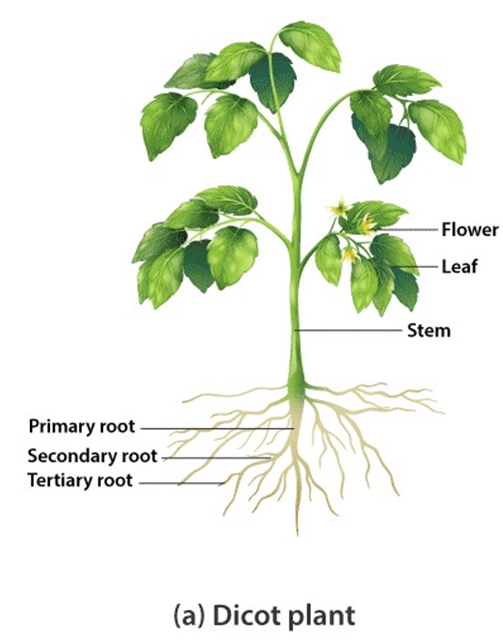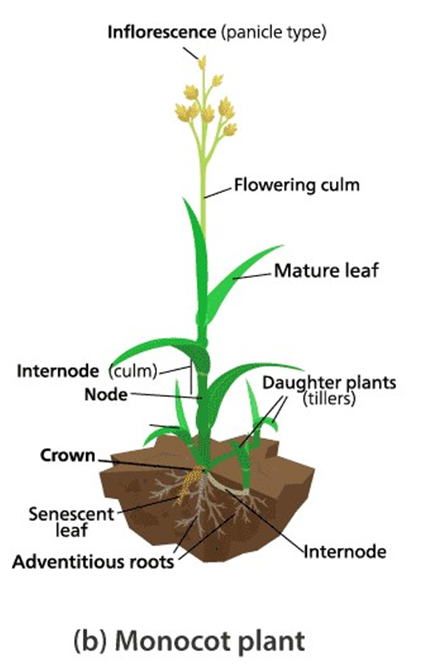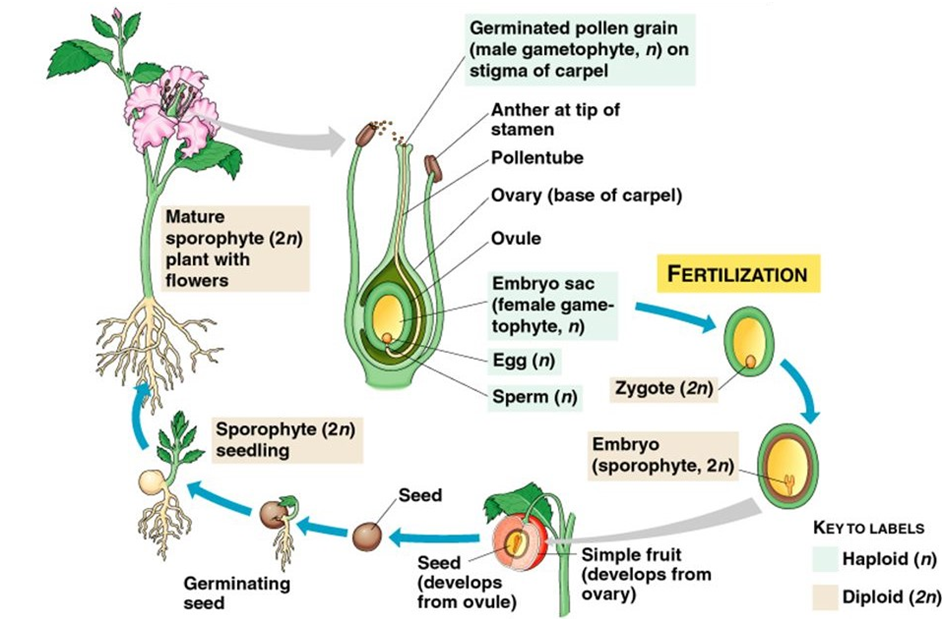Angiosperms
Angiosperms (flowering plants) generate pollen grains and ovules in specialized structures known as flowers. The seeds of angiosperms are encased in fruits. The angiosperms are a diverse group of plants that can be found in a variety of environments. They range in size from the tiniest Wolffia to massive Eucalyptus trees (over 100 meters). Food, fodder, fuel, medicines, and a variety of other commercially significant things are all provided by them. There are of two types: monocotyledons and dicotyledons. Seeds with two cotyledons, reticulate venations in leaves, and tetramerous or pentamerous flowers (four or five members in each floral whorl) distinguish dicotyledons.


Figure 9: A dicot and monocot plant.
Monocotyledons, on the other hand, have single cotyledonous seeds, leaves with parallel venation, and trimerous flowers with three members in each floral whorl. The stamen is a flower's male sex organ. A short filament with an anther at the tip makes up each stamen. The pollen mother cell divides through meiosis within the anthers to produce microspores, which mature into pollen grains. The pistil is a flower's female sex organ. A large ovary, a long slender style, and the stigma make up the pistil. Ovules can be found inside the ovary. Each ovule has a megaspore mother cell, which goes through meiosis to produce four haploid megaspores. To produce the embryo sac, three of them degenerate and one divides.
A three-celled egg apparatus – one egg cell and two synergids, three antipodal cells, and two polar nuclei – is found in each embryo sac. Eventually, the polar nuclei combine to form a diploid secondary nucleus. Pollen grains are dispersed from the anthers and carried to the stigma of a pistil by wind or other means. Pollination is the word for this process. The pollen grains germinate on the stigma, and the pollen tubes grow through the stigma and style tissues to reach the ovule. Two male gametes are released from the pollen tubes into the embryo sac. Syngamy occurs when one of the male gametes combines with an egg cell to generate a zygote. The triploid primary endosperm nucleus (PEN) is formed when the other male gamete combines with the diploid secondary nucleus.

This phenomenon is known as double fertilization because it involves two fusions, syngamy and triple fusion, which is unique to angiosperms. The zygote matures into an embryo (with one or two cotyledons), and the PEN matures into endosperm, which feeds the growing embryo. After fertilization, the synergids and antipodals disintegrate. The ovules become seeds, and the ovaries become fruit, during these activities.

 ACME SMART PUBLICATION
ACME SMART PUBLICATION
